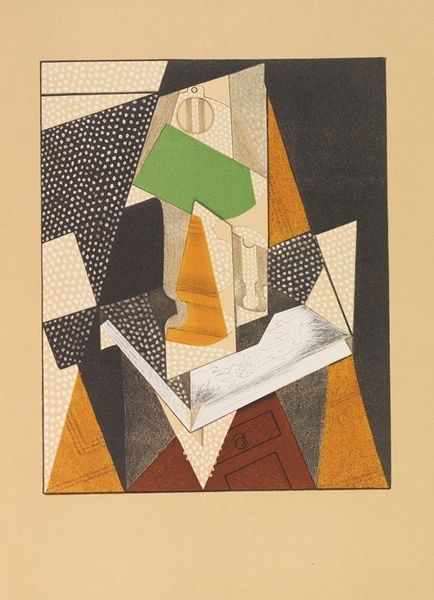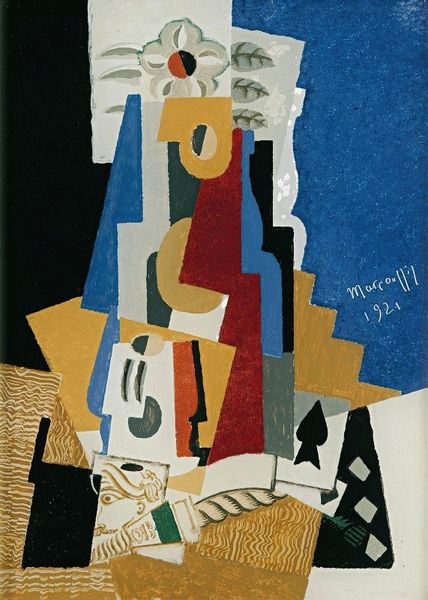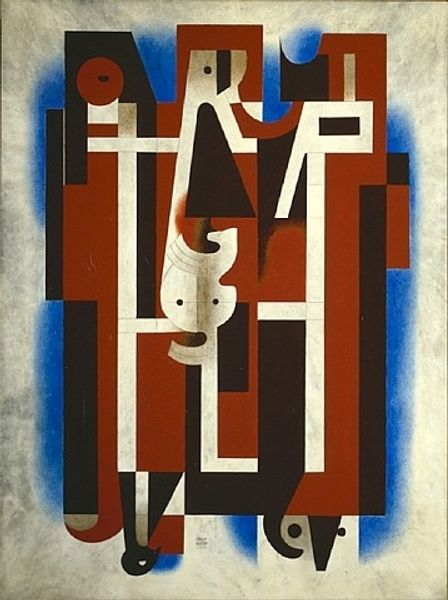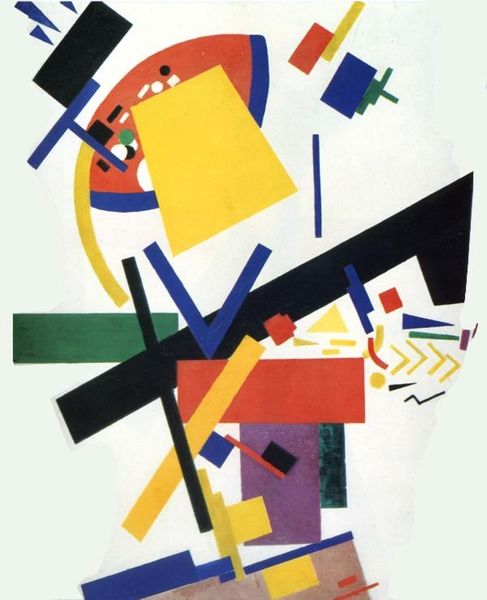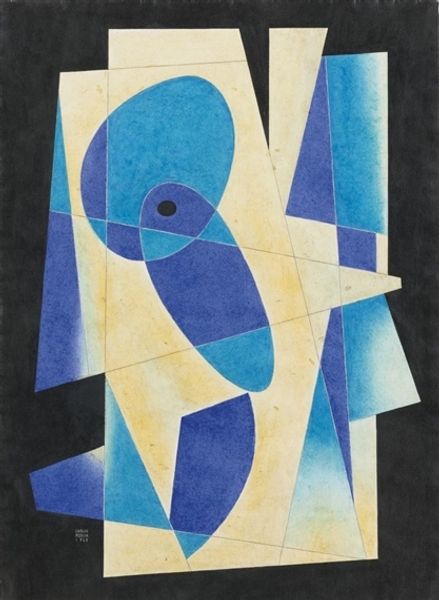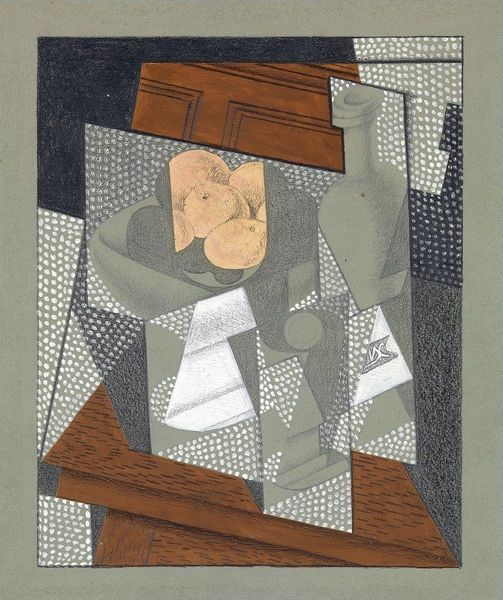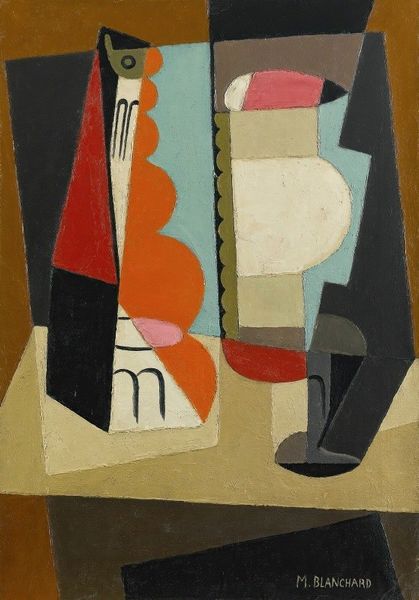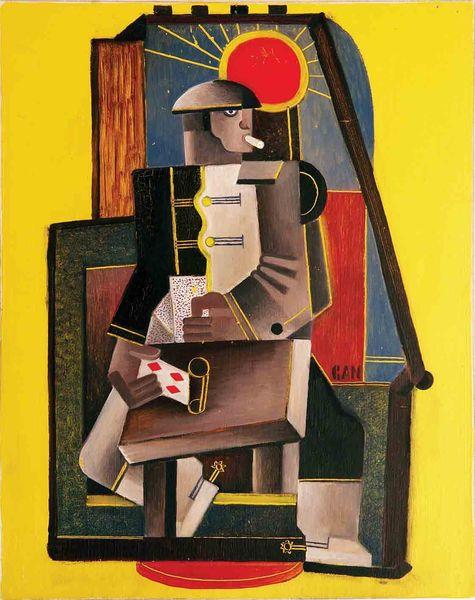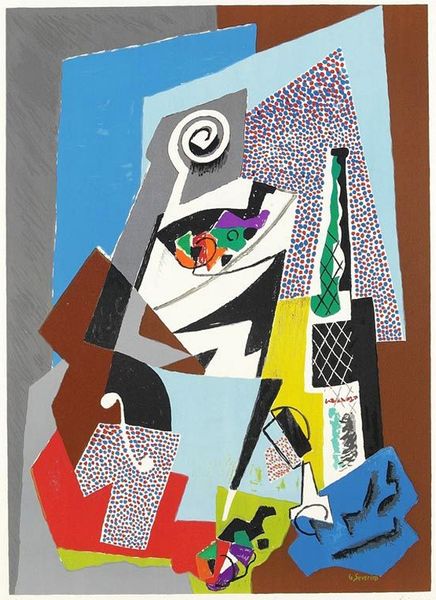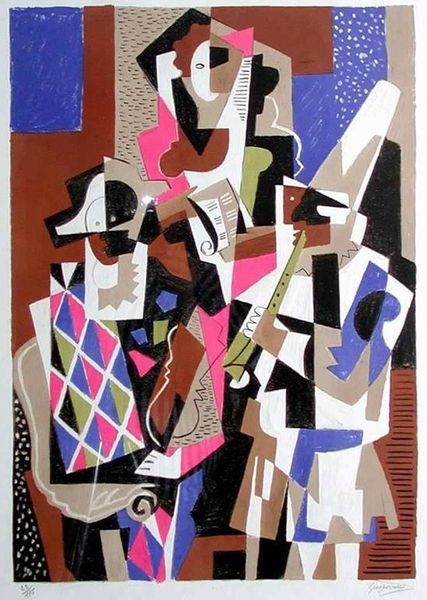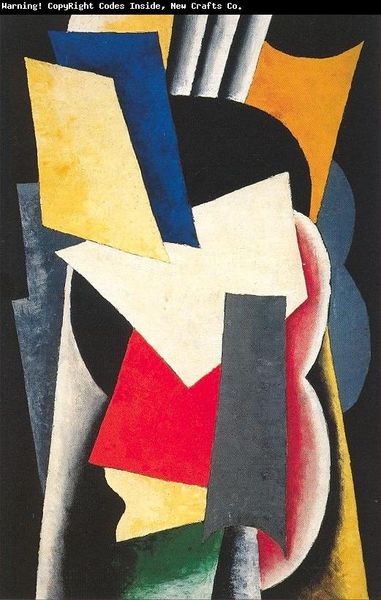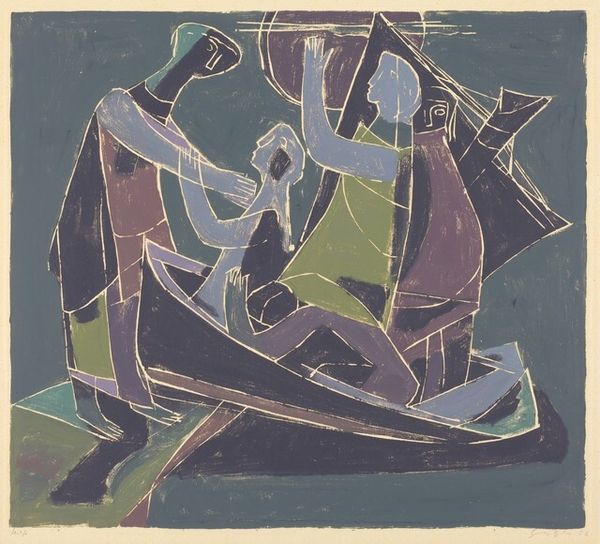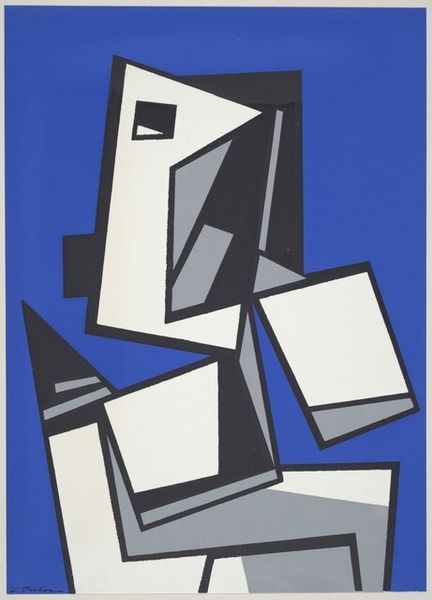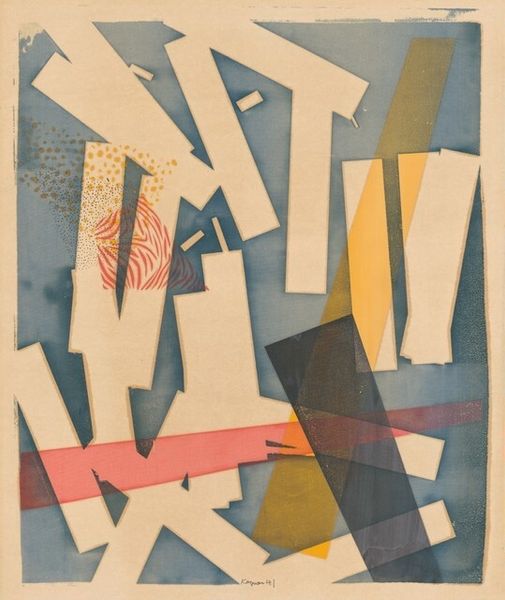
Copyright: Gino Severini,Fair Use
Curator: Looking at this painting by Gino Severini from 1955, entitled "Still Life," what's your initial impression? Editor: It strikes me as both unsettling and fascinating. The cool blues and grays juxtaposed with the warmer orange hues create an interesting tension, but the fragmented forms give it a rather clinical, almost dissected feeling. It feels less like an invitation to a meal and more like an autopsy report. Curator: Severini's engagement with Cubism and Futurism provides a lens through which we can see this “Still Life” as a commentary on the fractured realities of the mid-20th century. Consider how these movements influenced not only art but also political and social ideologies grappling with rapid change and destruction in the wake of World War I and the lead-up to the Cold War. Editor: I see that fragmentation, but even more I am drawn to the specific symbols employed: the fish, the wine glass or bottle, and the geometric patterns, like echoes from different periods, all trying to speak simultaneously. There is something fundamentally "fishy" about this piece. The fish is decorated in an odd mosaic pattern, seemingly deconstructed, as if it lost its cultural symbolism of abundance. Curator: Precisely! That 'deconstructed' fish represents a cultural disruption and fragmentation mirroring socio-political turmoil and alienation, particularly poignant during the post-war existential anxieties. How might the act of depicting a still life, a genre historically linked to domesticity and plenty, through such a discordant visual vocabulary, reflect or perhaps even critique broader power structures of the time? Editor: The geometric shapes, stark contrasts, and fragmented form convey the underlying disharmony between humanity and its surroundings. Severini seems to highlight the disintegration of cultural emblems. Perhaps the fracturing also shows our attempts to hold onto them amidst the turmoil? This is especially potent in consideration to a painting that should, theoretically, represent everyday serenity. Curator: These artistic choices are deeply intertwined with societal context. Reflecting on these tensions enriches our reading of "Still Life". It moves beyond being just an image of things arranged and asks pertinent questions about how the artistic language can address larger narratives around gender roles, consumption, and social order. Editor: Absolutely. By deconstructing familiar imagery and motifs, he makes us acutely aware of the symbols we often take for granted. His "Still Life" persists, a quiet memento of how history changes the shape of culture.
Comments
No comments
Be the first to comment and join the conversation on the ultimate creative platform.
